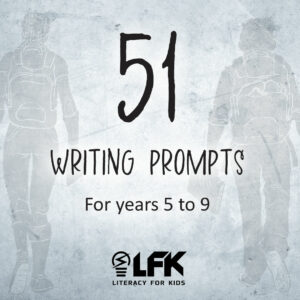Explaining Reading: Inferring

#4. Inferring
Inferring is notoriously difficult for students. The data from our literacy programs consistently show that kids struggle with this concept.
Inferring is the ability to “read between the lines” or to “get the meaning” that the author implies, but does not state directly. No wonder our students find it tricky.
Inferring dominates virtually all comprehension because, to one extent or another, comprehension always involves trying to “get inside the author’s head” to see what he/she meant when the text was composed.
The student, operating from one set of background experience, cannot precisely know the mind of an author, who is coming from a different experience background. The reader must make a calculated guess as to the author’s meaning. Even when the author says something straightforward as “The car was blue,” the reader must infer the shade of blue, the make of the car and so on. So in this sense, virtually all comprehension requires some inference.
Therefore, inferring is a crucial comprehension strategy.
| Inferring is not done carelessly, and it is not wild guessing. Good readers use clues an author supplies plus their own background knowledge. |
How Will You Know You Need to Teach Inferring?
The situation: When discussing the text that has been read, you notice that students cannot answer questions about character traits, or mood or other information the author implies but does not state explicitly.
* Conceptual Understandings That Must Be in Place *Students need to understand:
|
So, what is the “secret” to doing it?
Students must:
- note the clues embedded in the text.
- access their own experience regarding these clues.
- make predictions about the implied meaning based on their experience with the clues provided by the author.
How do you know if your students are successful in this skill?
If after reading or listening to a story, students are able to answer questions that require comprehending what the author has implied but has not directly stated, and see if your students can describe the thinking they did to do such inferring.
Applying it to Writing
Students often understand inferring best if, during their own writing, they are encouraged to imply meaning. Consequently, when teaching to infer during reading, it is a great idea to plan writing sessions in which students are encouraged to insert into their own writing various kinds of implied meaning.
Inferring is essential to comprehension. Our programs Literacy for Kids and Literacy for Boys contain texts that require students to make connections, draw conclusions, or make predictions. When helping a student, pose open-ended questions that require students to infer answers. For example, instead of asking for a direct response, ask questions like “What do you think might happen next?” or “Why do you think the character made that choice?”
Want your students to finish strong in their literacy? Want more from your literacy program? Contact us for a 30-day free trial in your school or classroom. New schools receive this terrific Teaching Resource: 51 Writing Prompts. These are a complete hit with our schools and you will not be disappointed with these image-rich, kid-centred Writing Prompts that will enthuse your writers.




Check out our blogs for more ideas and tips.
Explaining Reading: #3 Imaging
Explaining Reading: #2 Monitoring and Questioning
Explaining Reading: #1 Predicting
7 Parent friendly tips for comprehension
Get boys reading in the digital age
What to do when your son hates reading – 6 top tips
Brought to you by Tanya Grambower
